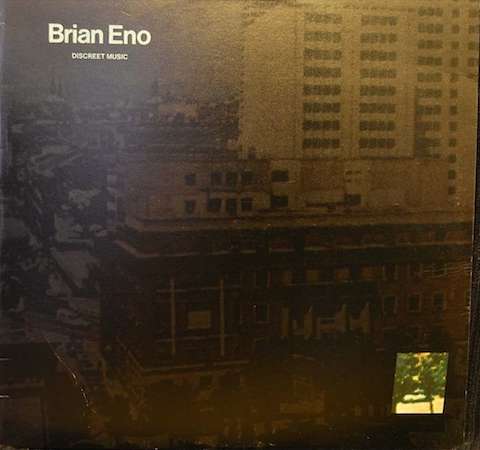
Given his celebrity status in the realms of both music and visual art, I don’t know that we can really call anything Brian Eno does obscure. But at one point, he did call his own efforts obscure — or at least those efforts required to establish and run the label Obscure Records, which he did between 1975 and 1978. In that short period, Obscure Records managed to put out ten albums, from Gavin Bryars’ The Sinking of the Titanic (catalog no. 1) to Michael Nyman’s Decay Music (no. 6) to Harold Budd’s Pavilion of Dreams (no. 10), all of which we might broadly categorize as “contemporary classical music,” with a strong bent toward new compositional techniques and what we’d now call ambient textures.
“The label provided a venue for experimental music,” says Ubuweb’s Obscure Records page, “and its association with Eno gave increased public exposure to its composers and musicians.” There, you freely can listen to all ten Obscure releases — which, I suppose, effectively makes them obscure no more — although they don’t include the famously detailed original liner notes “analyzing the compositions and providing a biography of the composer.”
Though he mostly acted as producer on Obscure recordings, Eno also used the label to put out his seminal 1975 solo album Discreet Music (no. 3), which contains a composition made using the then unheard-of technique of running several tape loops simultaneously and letting the sound recorded on them run gradually out of sync. Obscure’s fifth release, Jan Steele and John Cage’s 1976 Voices and Instruments, features “The Wonderful Widow Of Eighteen Springs,” previously featured here on Open Culture as interpreted by Joey Ramone.
This may seem colorful enough for any label’s lifetime, but Eno did have an eleventh Obscure record planned. It ultimately made more sense, however, to found an entirely new operation to put out this work, a certain Music for Airports. It came out as the flagship release from Eno’s Ambient Records — and the rest, my friends, is popular-experimental music history.
Albums from Obscure Records can be sampled over at UBU.
Related Content:
David Bowie & Brian Eno’s Collaboration on “Warszawa” Reimagined in Comic Animation
Jump Start Your Creative Process with Brian Eno’s “Oblique Strategies”
Brian Eno on Creating Music and Art As Imaginary Landscapes (1989)
How David Byrne and Brian Eno Make Music Together: A Short Documentary
Hear Joey Ramone Sing a Piece by John Cage Adapted from James Joyce’s Finnegans Wake
Colin Marshall hosts and produces Notebook on Cities and Culture as well as the video series The City in Cinema and writes essays on cities, language, Asia, and men’s style. He’s at work on a book about Los Angeles, A Los Angeles Primer. Follow him on Twitter at @colinmarshall or on Facebook.


At least some of these albums are commercially available. Is Ubuweb distributing this material with the rightsholder’s permission, or is it essentially bootlegging?
Your description of ‘Discreet Music’ (Obscure 3) doesn’t quite fit the bill. “…using the then unheard-of technique of running several tape loops simultaneously and letting the sound recorded on them run gradually out of sync.” This certainly applies to the vocal and instrumental parts comprising Eno’s ‘Music For Airports,’ released at the end of the ’70s. ‘Discreet Music’ was the product of brief phrases played back by an early form of sequencer, these phases then being repeated at extended intervals via tape echo. As to the “then-unheard of” component — letting loops run out of sync with one another – this technique underpinned earlier, landmark works in Steve Reich’s canon (‘It’s Gonna Rain’ and ‘Come Out’) which Eno has often cited as inspiration for his own work.